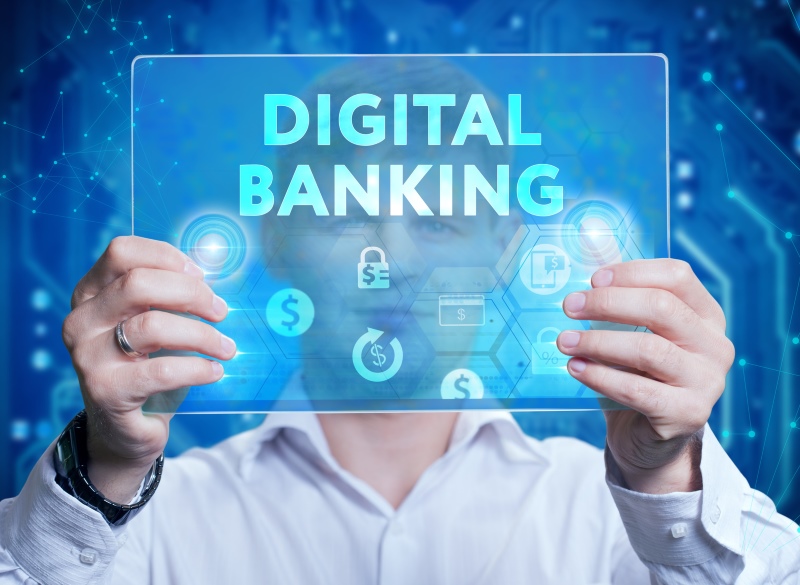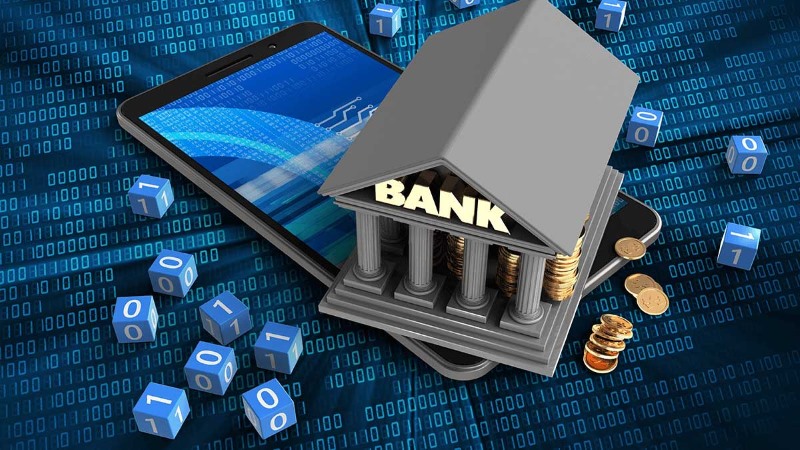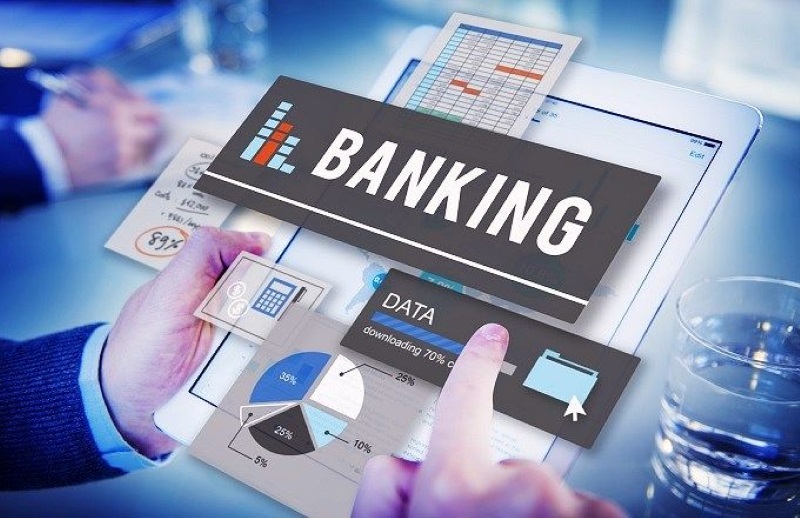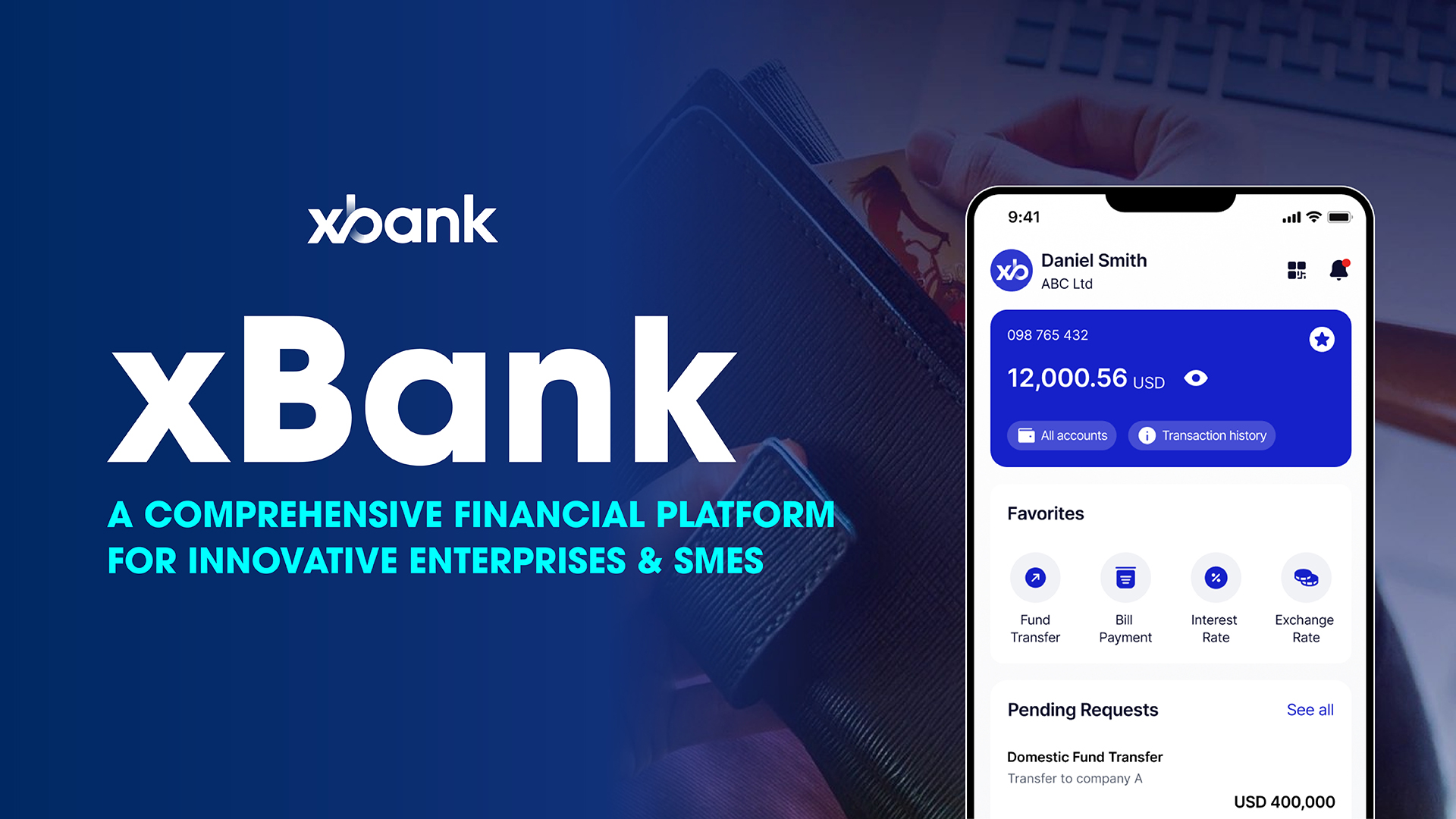The growth of digital technology has completely changed the way individuals interact with financial institutions, leading to the emergence of Digital Banking.
1. Understanding Digital Banking
At its core, Digital Banking involves the digital transformation of conventional banking services, providing customers with the ability to access a wide range of financial services through platforms like websites, mobile applications, and other internet-connected devices. This advancement eliminates the need for in-person visits to physical bank branches, allowing users to perform essential tasks such as account opening, transferring funds, paying bills, and managing investments from the convenience of their digital devices.

Key Features of Digital Banking:
- Fully Online Operations: Digital Banking empowers users to access and complete transactions at any time and from any location with a stable internet connection.
- Advanced Technology Integration: The use of technologies such as AI, blockchain, and Big Data optimizes user experiences and improves operational efficiency within financial institutions.
- Robust Security Systems: Digital Banking platforms employ cutting-edge security mechanisms like encryption, biometric authentication, and AI-driven fraud detection to protect user data and transactions.
- Seamless, Contactless Transactions: All banking interactions are conducted without the need for physical engagement, enhancing both speed and convenience.
With the integration of these advanced technologies, Digital Banking has become a pivotal element of the modern financial infrastructure, offering unmatched convenience, security, and technological innovation.
2. The Evolution of Digital Banking
a) Early Stages: 1980s to 1990s
The evolution of Digital Banking can be traced back to the 1980s with the introduction of Telephone Banking, which allowed customers to perform basic banking functions like checking account balances and transferring funds via phone calls. By the late 1990s, the advent of the internet ushered in the age of Internet Banking, enabling customers to access their accounts and perform transactions online. This represented the first major shift toward a more digital financial landscape.
b) The Mobile Banking Era: 2010s
The 2010s saw the explosive growth of smartphones, which laid the foundation for Mobile Banking. Banks started developing mobile applications that allowed users to access banking services from their phones, breaking down the barriers of time and location. Key milestones from this period include:
- Chase Mobile: JPMorgan Chase’s mobile app allowed customers to deposit checks by simply capturing a photo with their phone’s camera.
- M-Pesa: Launched in Kenya, this mobile money service revolutionized financial inclusion by providing millions of unbanked individuals in Africa with access to financial services through basic mobile phones.
c) Digital-Only Banks: 2015 to Present
By the mid-2010s, Digital-Only Banks (also known as Neobanks) began to emerge. These banks, such as Revolut, N26, and Monzo, operate entirely online without any physical branches. Offering a comprehensive suite of services—from account creation to investment management—these digital-first banks are setting new standards for the banking experience.
3. Core Features of Digital Banking
Digital Banking has introduced several transformative features that have revolutionized the way financial services are provided, enabling a more accessible, efficient, and secure user experience. Below are the core features that define modern Digital Banking:

3.1 24/7 Accessibility
One of the most significant advantages of Digital Banking is the ability for customers to access their financial services around the clock. Unlike traditional banking, which is often restricted by business hours and the need to visit physical branches, digital platforms are available 24 hours a day, 7 days a week. This gives customers the flexibility to manage their accounts, conduct transactions, and resolve issues whenever it is convenient for them. Whether it’s checking account balances, transferring funds, or reviewing financial statements, customers can engage with their financial data in real time, without being limited by time or location constraints. This accessibility is especially beneficial for customers in different time zones or those with irregular schedules.
3.2 Contactless Payments
Contactless payment technology has drastically transformed the way people make everyday transactions. Using technologies such as Near Field Communication (NFC) and QR codes, Digital Banking allows users to make swift and secure payments without the need to physically swipe or insert a card. NFC technology enables users to tap their smartphone or contactless card near a point-of-sale terminal to complete a payment. Similarly, QR codes allow for easy peer-to-peer (P2P) transfers or payments at retail locations. These systems enhance security by reducing physical contact, which is particularly important in a post-pandemic world, and they speed up transactions, making them more convenient for both customers and merchants. The contactless payment feature also supports the growth of digital wallets (e.g., Apple Pay, Google Pay) and mobile payment platforms (e.g., WeChat Pay, Alipay), providing seamless and global alternatives to cash.
3.3 AI Integration
Artificial Intelligence (AI) has become a cornerstone of Digital Banking, enabling banks to provide highly personalized and intelligent services. AI powers virtual assistants (such as Erica by Bank of America) that assist users with a wide range of tasks, from answering queries to making financial recommendations. These assistants use natural language processing (NLP) to understand and respond to customer inquiries in real-time, making customer service more efficient. Additionally, AI is instrumental in fraud detection: by analyzing patterns in transaction data, AI algorithms can identify unusual activity and flag potential fraud before it occurs. AI is also used for predictive analytics, allowing banks to offer tailored financial advice and products based on a customer’s individual behavior and needs. This level of personalization and security is a game-changer in customer experience and operational efficiency.
3.4 Real-time Investment Management
Another key feature of Digital Banking is the ability to manage investments in real-time. Traditional investment management was often slow and required manual intervention, but digital platforms now allow users to monitor and adjust their portfolios on the go. With the help of online tools and mobile applications, customers can track their investment performance, make buy/sell decisions, and rebalance their portfolios instantly. Robo-advisors, powered by AI, can also provide automated, low-cost portfolio management based on a user’s risk tolerance and investment goals. This level of accessibility empowers individuals to make informed investment decisions and stay on top of market fluctuations, ultimately providing greater control over their financial futures.
3.5 Blockchain for Faster Payments
Blockchain technology is becoming increasingly integrated into Digital Banking to enhance the speed and efficiency of payments, especially in the context of cross-border transactions. Traditionally, international transfers could take several days to process, involving intermediaries such as correspondent banks and high transaction fees. Blockchain eliminates many of these inefficiencies by enabling peer-to-peer (P2P) transactions that are processed almost instantly. By using a decentralized ledger system, blockchain enhances transparency, reduces the risk of fraud, and minimizes the cost of international payments. In addition, cryptocurrencies, such as Bitcoin and Ethereum, are gaining acceptance as alternative payment methods within Digital Banking platforms, further promoting faster and more cost-effective cross-border transactions.
3.6 Customizable Security Settings
Security is a paramount concern for Digital Banking platforms, and many modern banks are offering customizable security settings to allow customers to take control of their own safety. Traditional banking relied on standard security measures like PIN codes and passwords, but Digital Banking offers more flexible and sophisticated options. Biometric authentication, including fingerprint scanning and facial recognition, is becoming the norm for login and transaction authorization, providing a higher level of security that is difficult to compromise. Additionally, users can set up alerts for specific transactions, customize login methods, and adjust security preferences based on their individual needs. This level of personalization ensures that customers can safeguard their financial data while maintaining a smooth and user-friendly experience.
4. The Benefits of Digital Banking
Digital Banking is gaining widespread acceptance due to its numerous advantages, benefiting both consumers and financial institutions:

- Convenience: Customers can easily perform transactions, such as paying bills or transferring money, from the comfort of their homes or on the go, without needing to visit a branch.
- Cost Reduction: The shift to digital operations has reduced the need for physical infrastructure, lowering operational costs for banks. These savings are often passed on to customers through lower fees or free services.
- Financial Inclusion: Digital solutions have empowered millions of previously unbanked individuals in developing countries by providing access to essential financial services via mobile phones.
- Increased Transparency: Customers can easily track their transaction history, view fees, and monitor account activities, leading to more informed financial decisions.
- Personalized Financial Services: The integration of AI enables banks to offer tailored advice and services based on individual spending patterns and financial needs.
- Environmental Sustainability: Digital Banking reduces paper usage and promotes cashless transactions, contributing to more sustainable financial practices.
5. The Challenges of Digital Banking
While Digital Banking offers many advantages, it also faces several key challenges:
- Cybersecurity Risks: As financial services move online, the risks associated with cyberattacks, data breaches, and fraud are increasing. Ensuring robust security protocols is essential.
- Regulatory Compliance: Banks must comply with complex regulations, such as GDPR in Europe and CCPA in the US, to protect customer data and maintain legal standards.
- Rising Competition: The growth of fintech startups and non-bank players is intensifying competition, pushing traditional banks to innovate and modernize their offerings.
- Technological and Organizational Transformation: For legacy banks, transitioning to fully digital platforms requires substantial investment in new technologies and cultural adaptation within the organization.
6. Emerging Trends in Digital Banking
Several trends are set to shape the future of Digital Banking, driven by technological innovations and evolving consumer expectations:
- Blockchain and Cryptocurrencies: Blockchain will continue to enhance transaction security and efficiency, and cryptocurrencies may become more integrated into digital banking platforms.
- AI and Big Data: The role of AI will expand in areas such as fraud prevention, customer service, and predictive analytics, enabling banks to better understand and serve their clients.
- Branchless Banking: The shift toward Digital-Only Banks will likely accelerate, as consumers demand cost-effective and user-friendly financial services.
- Sustainability Focus: Digital Banking platforms will increasingly align with global sustainability initiatives, such as reducing paper consumption and promoting eco-friendly practices.
- Embedded Financial Services: Banks will embed financial services within non-financial platforms, such as e-commerce sites or social media applications, creating a seamless ecosystem.
7. The Impact of Digital Banking in Emerging Markets
In emerging markets, Digital Banking is playing a transformative role in enhancing financial inclusion, particularly in regions where traditional banking infrastructure is limited. These markets, characterized by high mobile penetration but low access to physical branches, have embraced digital solutions to bridge the financial inclusion gap. Let’s take a closer look at how Digital Banking is making a difference in Africa, Asia, and Latin America.

a) Africa: M-Pesa and Financial Inclusion
Africa stands out as a leader in mobile banking adoption, with platforms like M-Pesa enabling millions of unbanked individuals to access financial services. M-Pesa, launched in 2007, allows users to send and receive money, pay bills, access loans, and save using simple mobile phones. By 2023, M-Pesa had over 50 million active users across several African countries.
Other Notable Innovations in Africa:
- Airtel Money: Competing with M-Pesa in several African countries, offering similar mobile banking services.
- Flutterwave: A Nigerian fintech company facilitating payments across the continent.
b) Asia: The Emergence of Superapps
Countries like India and China have become hotspots for fintech innovation, particularly with the rise of superapps—platforms that combine multiple services, including banking, payments, and e-commerce, into one seamless interface.
India’s Paytm: A leading mobile wallet and payments platform, Paytm gained significant traction after India’s demonetization initiative in 2016. China’s Alipay and WeChat Pay: These platforms dominate the mobile payments space in China and have expanded globally.
c) Latin America: The Rise of Neobanks
Latin America is experiencing a surge in Neobanks, which are transforming the financial services landscape by offering cost-effective solutions and overcoming traditional banking barriers.
Nubank: A leading Neobank in Brazil, providing free checking accounts and low-cost credit cards. Other Neobanks in the Region: Banco Inter in Brazil and Ualá in Argentina are examples of financial institutions leveraging digital-first models.
Conclusion
Digital Banking is fundamentally reshaping the financial services sector by leveraging advanced technologies and innovative solutions. Despite challenges such as cybersecurity risks and regulatory complexities, Digital Banking offers unparalleled advantages in terms of convenience, cost-efficiency, and financial inclusion.
As digital platforms continue to evolve, Digital Banking will play a crucial role in the future of finance, driving economic growth, empowering individuals, and promoting global financial inclusion. The ongoing transformation of financial services through digital innovation is set to redefine the global economic landscape.





